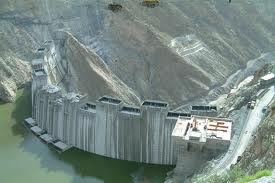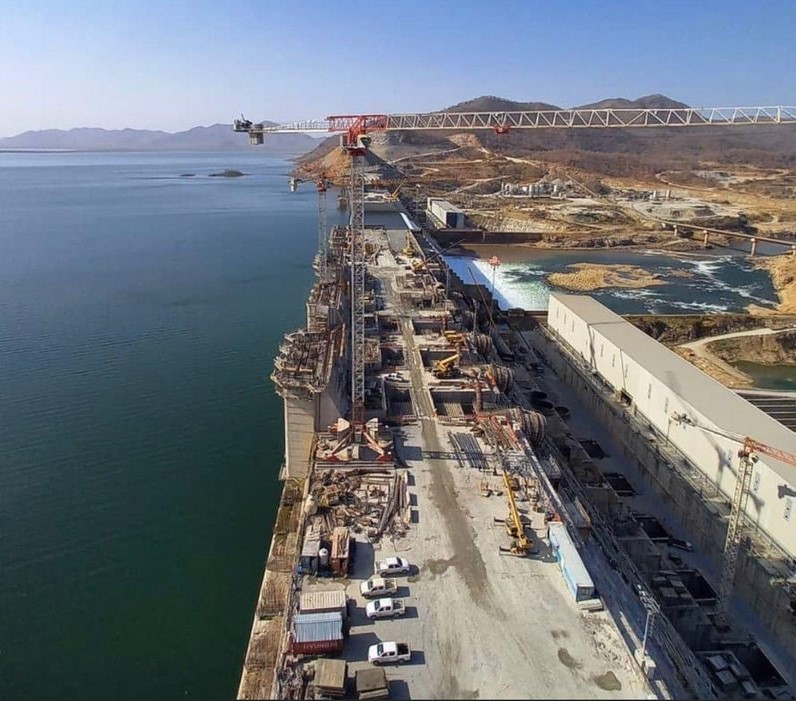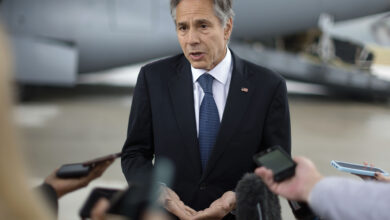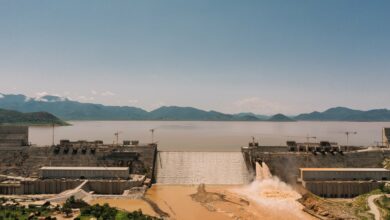
Foreign Ministry spokesperson Badr Abdel Aty on Tuesday said the ministry is intensifying endeavors on both regional and international levels to convince the international community of Egypt’s position regarding the Renaissance Dam.
“We are not against development in Ethiopia in particular or the Nile Basin countries in general,” he said. “But we will not allow harm to our interests and national security.”
“There is an understanding that our position is just,” he added.
He said the ministry sent fact sheet to all Egyptian embassies explaining Egypt’s firm position on the issue in order for the embassies to relay them to respective governments and media.
“Our position is based on mutual benefit without harming any party,” he said.
He said the fact sheet explains in detail all stages of this issue beginning from the announcement of the Nile Basin Initiative ten years ago when Egypt, Sudan and Ethiopia agreed to prepare a joint study for electricity interconnection and regional energy trade projects. This study recommended the construction of two dams on the Blue Nile, namely the Mandaya and the Border dams. However, in February 2011, the Ethiopian government suddenly announced its intention to build a new dam, which prompted the Norwegian government to stop funding the study.
The sheet explains further that in April 2011 Ethiopia had singlehandedly laid the foundation for the Renaissance Dam without providing more information about the project other than that it would not affect the downstream nations but later said that it would.
The Renaissance Dam, which cost LE4.7 billion, is the largest in the region with a height of 145 meters and a storage capacity of 74 billion cubic meters of water to generate 6,000 MW.
The sheet also covers the negotiations with Ethiopia since the visit of former Prime Minister Essam Sharaf to Ethiopia in May 2011 and his meeting with Ethiopian Prime Minister Meles Zenawi. During this meeting, they had agreed to form a committee of two experts per country from Egypt, Ethiopia and Sudan in addition to four other international experts to assess the repercussions of the dam on the downstream countries.
In its report, however, the committee said that the design of the supporting dam is weak and that it did not receive the feasibility, financial and other studies that had been requested for a year.
The report also said that the models of the hydraulic design and the storage lake show negative effects on Egypt’s water needs and the power generation of the High Dam. This is taking into account the specifications announced by the Ethiopian government for filling the storage area over six years.
The committee requested the completion of all studies related to the water resources system and the hydraulic design, as well as an evaluation of any environmental effects on the downstream countries.
Abdel Aaty said that in the spirit of cooperation and goodwill on the part of Egypt to reach an agreement with the Ethiopian government, the former foreign minister paid a visit to Addis Ababa in June 2013 to exchange views with his Ethiopian counterpart. They agreed to work jointly with Sudan to quickly implement the recommendations of the report.
He added that the Ethiopian foreign minister admitted the report and stressed his country's keenness not to cause any harm to Egypt.
The report said that although they agreed to implement the recommendations quickly, especially as the Ethiopian government is continuing to build the dam, the first meeting of the water ministers of Egypt, Sudan and Ethiopia wasn't held until November 2013, which was five months later, followed by two rounds in December 2013 and January 2014.
Edited translation from Al-Masry Al-Youm



